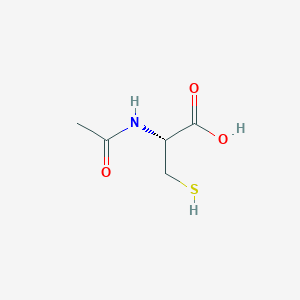Detail Information of Xenobiotics
| General Information of Xenobiotics (ID: XEO00110) | ||||||
|---|---|---|---|---|---|---|
| Xenobiotics Name |
Acetylcysteine
|
|||||
| Xenobiotics Type |
Pharmaceutical Agent(s)
|
|||||
| Classification |
Approved/Marketed Drug
|
|||||
| Structure |
<iframe style="width: 300px; height: 300px;" frameborder="0" src="https://embed.molview.org/v1/?mode=balls&cid=12035"></iframe>
|
 |
||||
| 3D MOL | 2D MOL | |||||
| PubChem CID | ||||||
| DME(s) Modulated by This Xenobiotics | ||||||
| DME(s) Inhibited by This Xenobiotics | ||||||
| Azoreductase (azoR) | DME Info | Streptococcus pyogenes | [1] | |||
| Beta-lactamase (blaB) | DME Info | Corynebacterium acnes | [1] | |||
| Catalase (CAT) | DME Info | Homo sapiens | [2] | |||
| Cytochrome P450 125A3 (cyp125) | DME Info | Mycolicibacterium smegmatis | [1] | |||
| Cytochrome P450 142A2 (cyp142) | DME Info | Mycolicibacterium smegmatis | [1] | |||
| NADPH-dependent oxidoreductase (nfrA) | DME Info | Staphylococcus aureus | [1] | |||
| Prostaglandin G/H synthase 2 (COX-2) | DME Info | Homo sapiens | [3] | |||
| DME(s) Induced by This Xenobiotics | ||||||
| NADH-ubiquinone oxidoreductase 20 kDa (NDUFS7) | DME Info | Homo sapiens | [4] | |||
If you find any error in data or bug in web service, please kindly report it to Dr. Yin and Dr. Li.

